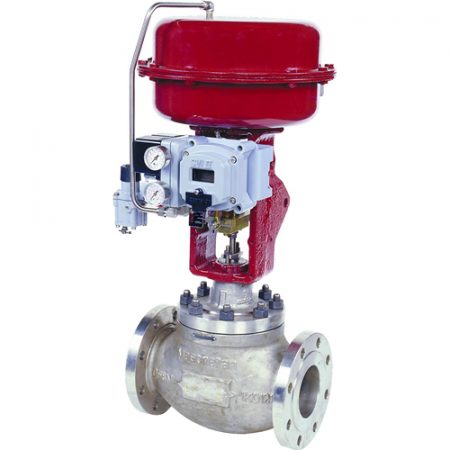Enhancing Functional Effectiveness with Advanced Control Valves
Enhancing Functional Effectiveness with Advanced Control Valves
Blog Article

Maximize Energy Financial Savings and Comfort With Advanced Building Automation Controls
In the world of contemporary architecture and center administration, the combination of advanced building automation regulates stands as a critical development. By harnessing the power of automation, buildings can adjust, react, and progress in means that were once unimaginable.
Energy Effectiveness Advantages
Energy performance benefits can considerably decrease power consumption and operational costs in buildings. By applying energy-efficient practices and technologies, structure proprietors and drivers can accomplish considerable financial savings while additionally adding to ecological sustainability. Among the primary benefits of enhancing energy effectiveness in structures is the decrease of utility bills. Energy-efficient systems, such as sophisticated structure automation controls, can enhance using resources like illumination, cooling, and heating, resulting in reduced power costs with time.
Moreover, boosted energy efficiency can lengthen the life-span of building devices and systems. By operating extra efficiently, cooling and heating systems, lighting components, and various other building parts experience less deterioration, leading to decreased maintenance and replacement prices. Additionally, energy-efficient buildings typically command greater residential or commercial property values and rental rates, giving long-lasting monetary advantages to proprietors.
Additionally, energy performance can improve occupant convenience and performance. Properly regulated indoor environments with optimal lights and thermal problems create an even more pleasant and conducive office, resulting in boosted worker contentment and performance. On the whole, the energy efficiency benefits related to sophisticated structure automation controls are diverse, incorporating price financial savings, ecological stewardship, and owner well-being.
Improved Convenience Control
Enhancing comfort control in structure atmospheres calls for an advanced assimilation of sophisticated automation systems for optimum resident wellness. By utilizing sophisticated building automation controls, centers can customize the interior atmosphere to meet the details needs and choices of residents. These systems make it possible for accurate regulation of lighting, air flow, and temperature, producing a comfy and productive atmosphere. Owner satisfaction and productivity are carefully linked to thermal convenience, making it vital to have systems in position that can adjust to changing conditions in real-time.
Boosted comfort control exceeds standard temperature level changes. It consists of attributes such as tailored setups, occupancy sensing units, and all-natural light usage to produce a responsive and dynamic setting. By incorporating these innovative controls, structures can not just boost comfort but also boost power efficiency by enhancing system procedures based upon actual tenancy and use patterns. Inevitably, prioritizing occupant convenience through innovative automation systems brings about a much more enjoyable and much healthier indoor environment.
Functional Performance Improvements

In addition, the execution of real-time surveillance and analytics tools allows building operators to identify energy ineffectiveness and functional anomalies promptly. By continuously checking power use patterns and system efficiency metrics, adjustments can be made in real-time to maximize energy intake and make certain peak functional efficiency. control valves. Furthermore, including demand reaction strategies right into structure automation controls can even more enhance operational efficiency you can look here by dynamically adjusting energy use based on grid conditions and prices signals
Indoor Climate Optimization
Reliable interior climate optimization is a fundamental facet of structure automation controls, ensuring passengers' convenience and health while optimizing power financial savings. more By utilizing innovative sensing units and controls, building automation systems can continually adjust and keep track of temperature, moisture degrees, air high quality, and ventilation to create an optimal interior environment. Maintaining comfortable and regular problems not just enhances passenger complete satisfaction however likewise increases performance and overall well-being.
Interior climate optimization also plays a critical function in power performance. By fine-tuning home heating, ventilation, and air conditioning systems based upon real-time information and tenancy patterns, building automation controls can significantly reduce power consumption - control valves. Applying approaches such as demand-controlled ventilation and thermal zoning can aid minimize energy waste while making sure that each area of the structure gets the needed conditioning.

Lasting Setting Creation
Structure automation regulates not just optimize interior environment conditions for energy effectiveness and passenger comfort however also lay the structure for producing a sustainable environment via calculated management of resources and systems. By integrating sophisticated structure automation technologies, such as sensing units, actuators, and intelligent software, facilities can adjust and keep an eye on power use in real-time to lessen waste and decrease their carbon impact. These systems enable predictive maintenance, recognizing potential concerns before they escalate and maximizing devices performance to boost longevity and efficiency.
Additionally, lasting setting production extends past power management to visit here include water preservation, waste reduction, and interior air top quality improvement. Building automation controls can control water use, detect leakages, and guarantee proper garbage disposal techniques, contributing to total sustainability initiatives. Additionally, by regulating and monitoring ventilation and filtering systems, these innovations improve passenger health and performance while decreasing energy consumption related to a/c procedures.
Verdict
To conclude, progressed structure automation controls deal considerable benefits in terms of energy financial savings, comfort control, functional performance, indoor environment optimization, and developing a lasting setting. By executing these controls, structures can attain ideal performance while reducing power usage and improving passenger convenience. It is evident that the use of sophisticated automation modern technology is critical in improving structure performance and creating a much more lasting future.
Energy effectiveness benefits can substantially reduce power consumption and operational prices in buildings. Overall, the power performance advantages linked with innovative structure automation controls are diverse, encompassing price savings, environmental stewardship, and owner wellness.
Additionally, incorporating demand response strategies into structure automation controls can even more enhance operational performance by dynamically adjusting energy usage based on grid problems and prices signals.
Structure automation controls not just maximize interior climate problems for energy efficiency and owner comfort yet additionally lay the structure for producing a lasting setting through strategic monitoring of systems and resources.In conclusion, progressed building automation regulates deal significant advantages in terms of power financial savings, convenience control, functional effectiveness, indoor climate optimization, and developing a lasting environment.
Report this page